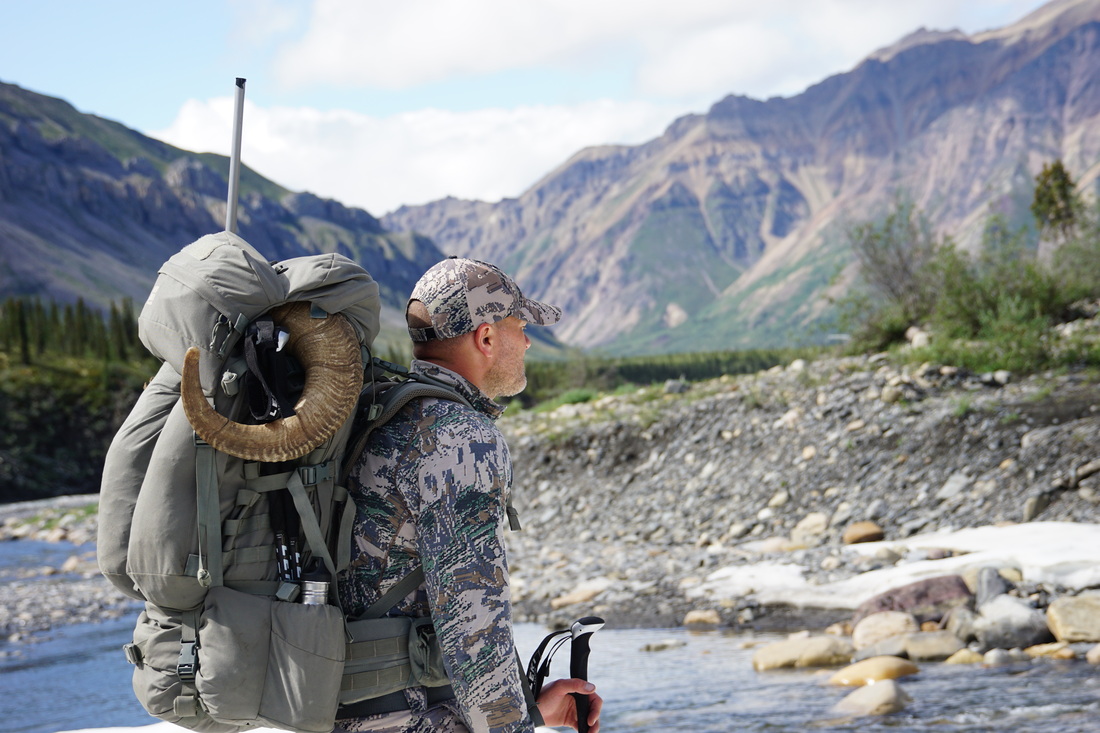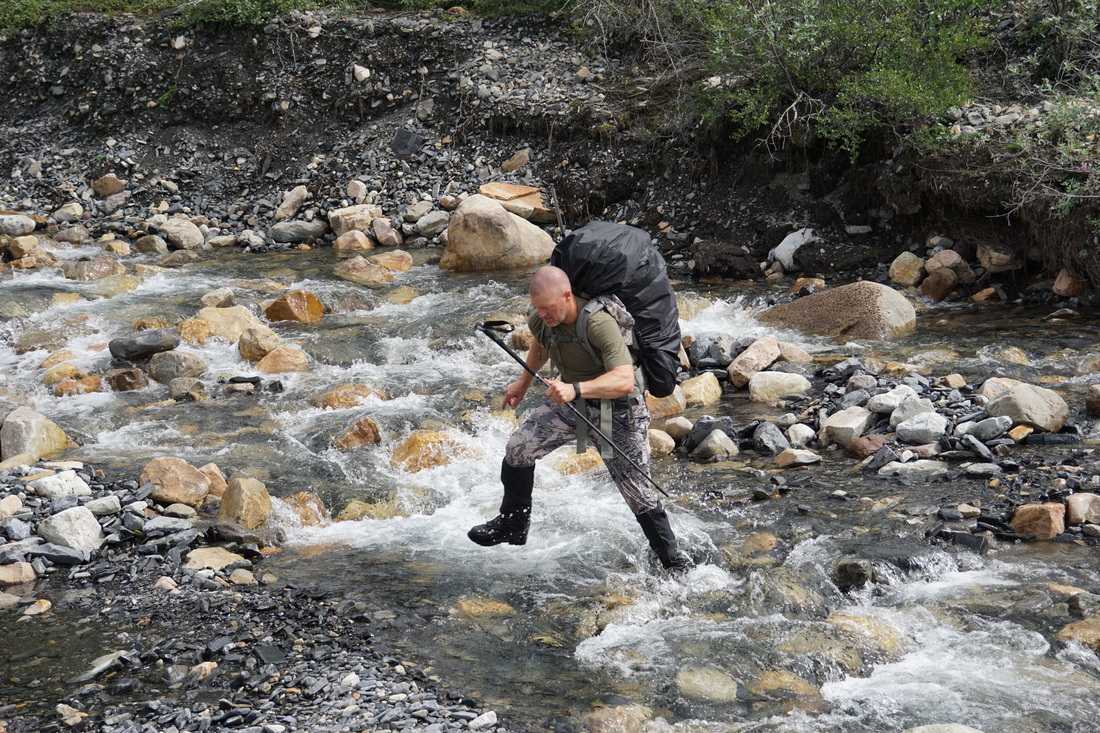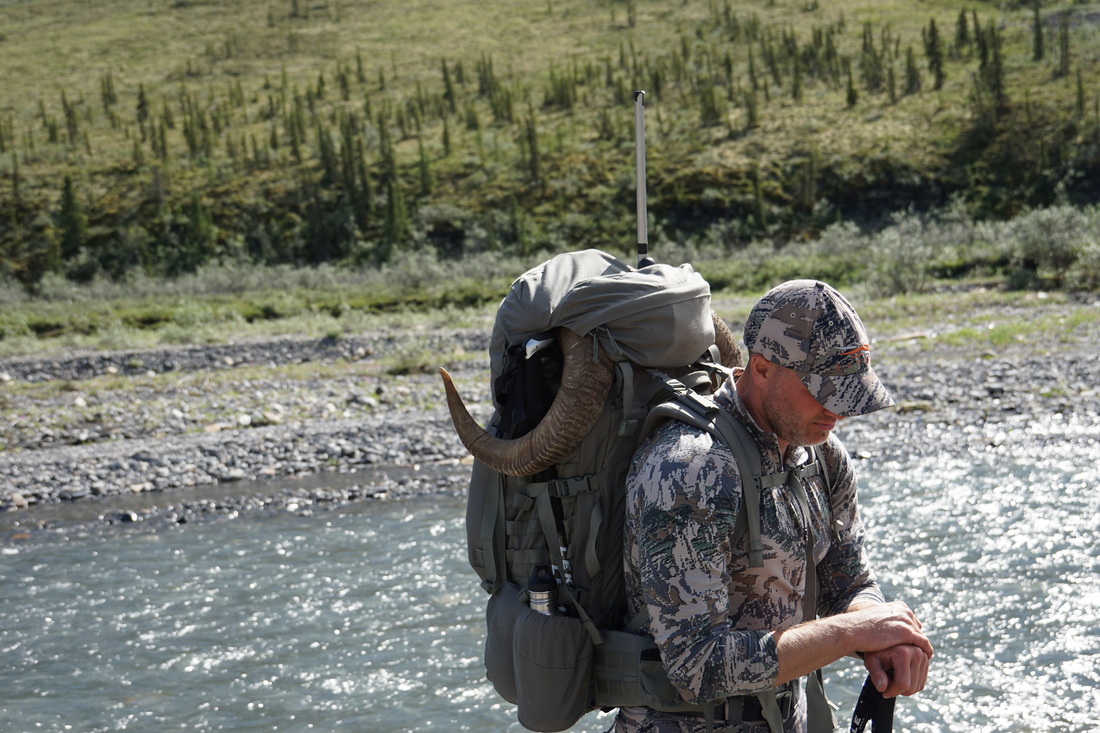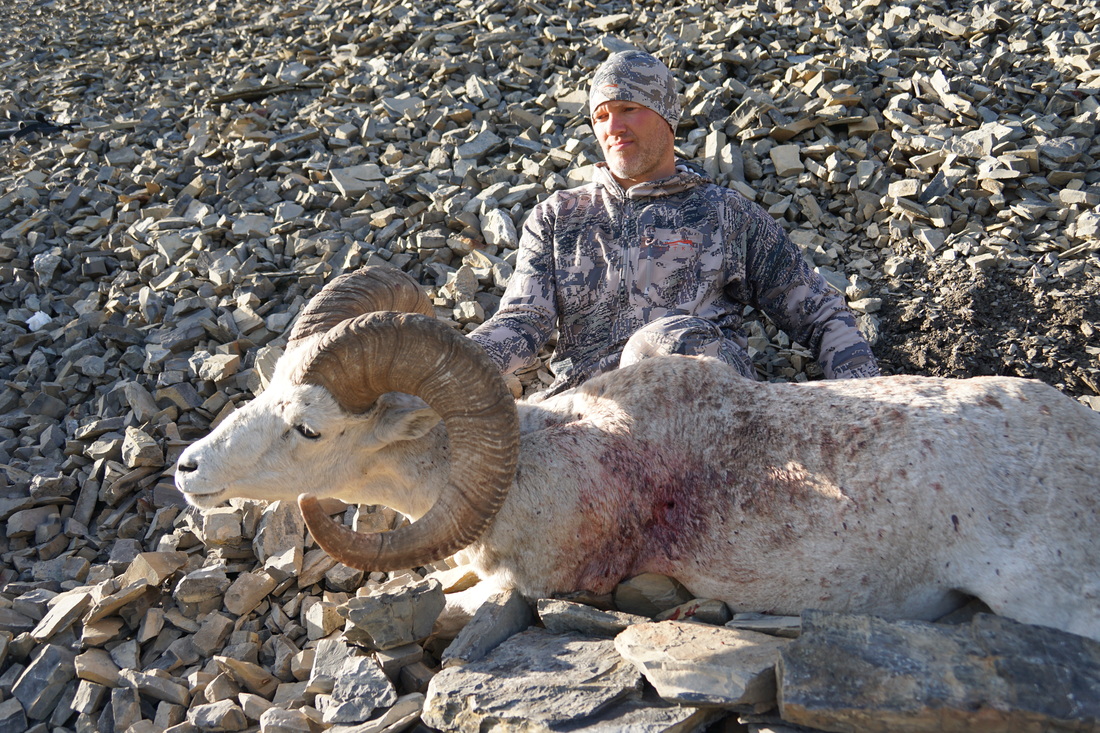There are few hunters who haven’t dreamed of one day traveling to a distant land in search of mountain game. From the rugged and wet mountains of British Columbia to the high alpine of the Northwest Territories, coastal Russia and the storied slopes of middle Asia these rugged landscapes and the animals that inhabit them have for centuries tempted those brave enough to accept the challenge. Many hunters never actually heed the call, but for those who do adventure assuredly awaits. And as with most things in life, proper preparation and attention to detail often makes the difference between the trip of a lifetime and a bittersweet trip home.
I have been fortunate enough to experience several guided hunts in Canada and Alaska over the past 10 years. Recently my life has been completely focused on working long hours, saving funds, and planning, preparing, and gearing up to chase wild sheep and mountain goats throughout the North. For me it’s a calling I cannot ignore. I knew from a young age that I wanted to be a hunter, and more specifically a hunter of mountain game. No matter how much I prepare, I am always challenged mentally and physically on these excursions and it is this constant personal challenge that inspires me as much as the game itself. I wanted to write something that provides insight to both the novice and the seasoned weekend adventurer regarding what it takes to plan, prepare, and hopefully be successful on a guided expedition style backpack hunt for mountain game. I will not exaggerate any points in this article, for those who have never been on this type of hunt it is essential you know exactly what to expect. I will primarily be talking about sheep and goat hunts, but if one is prepared for either of those they will be ready for any mountain or wilderness hunt this planet has to offer.
Planning
Planning a guided expedition is not something you can do in a short period of time. These hunts can take months, if not years to put together. After choosing the species you wish to pursue, usually the easiest part of the process, you need to start researching the different regions and outfitters that offer hunts for the given animal. This can often take months due to the distribution of the species and the number of outfitters that guide for it, leaving you with many choices. A good place to start would be a publication such as Wild Sheep published by the Wild Sheep Foundation that has a section dedicated to outfitter advertising. And as Dustin mentioned in his August article, conventions such as The Sheep Show where you can actually meet and speak with the outfitters personally (and usually the guides as well) are worth the time and expense to attend. This is absolutely my preferred method as it gives you the chance to meet the outfitters face to face, get answers to all your questions and get a sense of the people behind the outfit.
Once you have narrowed down your choices get references for both successful hunters and unsuccessful ones as well. Call these people and spend some time asking them about the hunt, the terrain, the weather, etc. Have your questions written down beforehand to prevent any confusion and to prevent leaving something out. These guys are a wealth of knowledge, take your time with them, they are on the reference list because they want to be and will not mind talking about their experiences. I am a reference for several outfitters and I always enjoy sharing my experiences with their potential clients.
Once you have nailed down an outfitter, they will send you a detailed packet of information. Read this like your life depends on it, because frankly it does! Pay extra attention to the gear lists they recommend, even if you have been on a mountain hunt in a similar landscape listen to what they suggest, these crews are professionals and know what they’re talking about.
Most will take a deposit and have a final due date for the balance. A lot of hunters make a deposit two years in advance then make payments up to the due date. And do not make your choice based on who is offering the cheapest hunt. There may be a reason it’s cheap! Throughout this article you will see the phrase “you get what you pay for” and it absolutely applies to an expenditure of this magnitude!
Your outfitter will give you suggestions on which airlines to book with once you reach their country. Take this advice, they know which airlines are hunter friendly and which are not. Some airlines have a reputation for “misplacing” rifle and bow cases; you do not want to end up with these airlines. Book your flights at least 4 months in advance. The last thing you want is to reschedule an entire hunt due to a botched attempt at booking a late “deal”. It will usually take at least two full days of travel to get to your destination, depending on where you are flying from. Plan these travel days accordingly. Do not try to get there by flying 24/7 so you arrive at base camp worn out before the adventure even begins. Split it up, fly for most of the first day then have a hotel reserved for a good night’s rest and some good food, then continue on the next day. I recently flew to the Northwest Territories for a Dall sheep hunt and it took 2 1/2 days to get from my house to sheep country. Take your time, stay well hydrated and nourished, and your body will thank you for it. Don’t forget that the last couple of flights will be in bush planes which will not be as smooth as a large airliner, but definitely more exciting.
Preparation
Well in advance of your departure you should have your gear dialed in and ready to go and I mean weeks or even months, not days in advance. This will insure that if something goes wrong with your gear you have ample time to replace it and break it in if necessary. Again, trust your outfitter when it comes to his recommended gear list. I will from time to time deviate from suggested lists but only because I have been on several sheep and goat hunts from early to late season, and know what works for me. Another “you get what you pay for” item is you gear! Spending over $20,000 on a Dall sheep hunt should be motivation enough to purchase high quality gear that will not fail and reduce your chances of success.
For clothing I’d strongly suggest following what I consider the most important rule: NO COTTON. I do not even take a cotton hat. Make choices from a company that offers a layering system such as Sitka Gear, where only synthetics or wool are used. In my opinion, lightweight clothing is integral to a comfortable and successful hunt. I have used Sitka for years and they have some exceptional pieces that have an extremely high heat to weight ratio but you need to pick what works for you and your budget. Where possible try on the gear you’re considering, or if ordering online do so well in advance of your trip as the fit of the various garments vary significantly from one company to another. Most of the companies have customer service teams that can help you select the right apparel and Sitka even has their System Builder on their website that can be a real help as far as determining exactly what you need for the terrain and season you’ll be hunting in. Again, the time of year you’ll be hunting will dictate which pieces to select. It may be warm or even hot where you live when you depart for your hunt, but rest assured you will encounter moisture and cold temps on your adventure, so pack accordingly. Even in the early season up north I bring a wool beanie and gloves, and rain gear is absolutely essential, regardless of the time of year.
Your backpack must be one of proven quality. I stay away from external frame packs all together as there is no reason to use one with the technology available in the new internal frame models from companies like Mystery Ranch. I have been using their NICE 6500 model for years now without a problem. I have heard that Stone Glacier makes quality packs as well that are also incredibly light, but have not personally tried them as of yet. The pack must be able to haul heavy loads comfortably, without wearing you out in the process. I’ve used the MR 6500 from 2 to 10 days with loads up to 100+ pounds, and it has performed flawlessly. Remember however, I am talking primarily about sheep and goat hunts here so if you’re planning a wilderness moose or grizzly hunt you might want to consider an external frame pack, I know of many hunters that swear by them for game of this size.
For boots I use Meindl Alaska Hunters and Darn Tough mountaineering socks. I’ve used this combo on all of my hunts and have never had an issue. Do not go into the hunt with something that is not made specifically for mountain hunts. I’ve seen some questionable boots that companies try to push as “sheep hunting” boots. Try not to fall for these marketing schemes. Buy proven boots from proven companies only. This may be your single most important piece of gear, hands down. Again, different brands fit different feet in different ways and your boots MUST fit appropriately. You can get away with a jacket or pants that may be a little loose but your boots should fit like a glove so you must take the time to try on various brands.
Optics of course are essential on mountain hunts, especially for sheep and goats. I currently use Leica but have used Swarovski as well. Again, you typically get what you pay for here but make sure whatever brand you choose does not fog or leak water into the internal parts of the glass. Try out a few different brands, and choose what you can see the best with as everyone’s eyes respond differently to each brand’s glass and coatings. Many of the premiere brands are very comparable when it comes to clarity and durability so it boils down to the brand you can literally spend hours looking through. Eye strain can be a real damper on your hunt. Your guide will always have a spotting scope so that is an optional item in your kit, I usually don’t bring one with me but I do bring my own range finder.
I also bring a small Sea to Summit waterproof bag with my survival gear inside. It includes an Iridium Satellite phone, stormproof matches, wetfire cubes, moleskin, blister pads, emergency bag, Surefire Saint Minimus headlamp and spare batteries, and some extra contacts. This varies from hunter to hunter, but those items (along with my raingear) never leave my pack no matter where I’m hunting.
This seems like a lot of gear but actually with the pack included it’s around 40 pounds. You’ll want to be as light as possible at this stage because you’ll also have to carry your own food for 10 days. It will be freeze dried backpacking food, usually Mountain House, some protein bars, and miscellaneous light snacks, but that adds up. With everything for the hunt, rifle and ammo included, I’m usually just over 50 pounds. Keep in mind that your pack will get lighter as the hunt progresses, but upon success you will be expected to pack out some meat, horns and the cape so any weight you cut will be made up for in spades!
In my opinion, the most important part of the preparation phase of your hunt will be your physical conditioning. I actually cannot put into words how important this is. This WILL be the difference between success and failure. As an experienced sheep hunter, and professional guide I can tell you I’ve seen many people fail due to an inability to perform physically. This absolutely baffles me! Guys will pay thousands of dollars and show up as physically prepared as though it’s a hunt out of a truck or tree stand. I’ve even have had guys tell me they are getting in shape by “hiking around the neighborhood with the wife and dog”. I ask them how many rams are living in their neighborhoods…exactly…NONE! Do not be this guy as it will not impress the outfitter, guides, or anyone else for that matter. This is the guy that goes home without a chance to harvest, and pretty much just went on the most expensive 10 day camping trip in the history of camping trips.
First and foremost, be realistic. If you are not in good shape it will take months to get into sheep shape. I stay in shape year round but increase my training volume and intensity about 4 months prior to departure. Start with your diet. Cut out the junk and eat good, clean food. Minimize canned, packaged or fast food. Eat fresh meats, vegetables, fruits, and organic dairy. You’ll lose 20 pounds in 2 weeks (if you are overweight) just by reducing or eliminating processed foods. And that weight loss will pay dividends in your training and on the hunt itself. After the diet is taken care of hit the gym. Concentrate on “big” lifts such as squats, deadlifts, and cleans, as these movements require the entire body to work together which transfers to the demands of mountains. These are also great lifts for “value” in that you’ll build more strength and endurance in less time by doing them. If you’re not comfortable with these lifts on your own, hire a trainer or strength and conditioning coach to help you learn the proper technique as you do not want to get injured before your hunt. Again, relative to the cost of the hunt some good training or coaching advice is worth every penny. I also like pull-ups and dips as well as they build core strength and help shed the rest of the unwanted weight. Generally speaking, use heavier weight and lower reps as this builds strength the fastest. You’re not trying to “bulk up” or “get ripped” here, hiking and hunting in the mountains is all about power to weight ratio so the stronger you are the less energy you’ll expend moving your body and your pack through the rough terrain you’re guaranteed to encounter.
Be careful with websites that claim to “train you for mountain hunting” unless they are actually mountain hunters, and not just weekend warriors who hunt a few days out of the year. They may have a degree in exercise science, but if they haven’t been on extended expeditions their info is not going to be applicable to you. The Training articles from the team here at The Journal of Mountain Hunting will be a great resource to help get you prepped for your hunt but at the end of the day if you’re new to these more “complex” lifts or serious training in general, there is no substitute for one on one instruction or coaching to get you started.
Stick with the gym initially and after a few weeks begin hiking with the boots and pack you will be using on the hunt. Hiking an actual mountain is obviously the best option but if you are not close to one then find stairs in a building or outdoors. I have the luxury of being within 5 minutes of high, steep mountains so I hike them at least four days a week but for those of you that do not have access to mountains, find the next best thing. A small 30 foot mound of gravel or a steep river bank is better than nothing and will duplicate the demands of a mountain slope better than any cardio machine will. As a last resort use an inclined treadmill or Stairmaster, and hit it 5 days a week (with your pack). You’ll want to start light and then add 5 pounds a week. I start at about 30 pounds and work up to around 80 typically. These hikes or training sessions should take you anywhere from 1.5 to 2 hours to complete and this generally will be sufficient, even if faced with a 2 day pack out and load close to 100 pounds. Remember, pacing is essential to surviving a grueling pack out and if you’ve trained adequately the strength you have built will be more important than being able to cover ground quickly so know your limits and even more importantly know what it FEELS like to be at your limits and communicate with your guide when you feel the need for a break. It’s amazing what a 5 minute rest and a snack will do for your energy.
I continue these hikes right up until 2 days before departure, usually getting 12 weeks of this volume of training in. Some guys tell me this is excessive, but for me it works. Following this sort of program I always feel strong and my cardio solid and ready to tackle just about anything. The rest boils down to mental toughness. Be careful not to overdo it as well, especially if you’re new to training or haven’t been training for a few years. Listen to your body! You may have been an athlete for years when you were younger but the body needs time to re-adapt to the demands of even a moderately intense training schedule. If you are extremely fatigued or sore then definitely take a day off to recover. Drink plenty of water, I drink at least a gallon or more a day. Proper recovery and hydration is the key to effective training, as is proper nutrition. The training itself is only half the equation! Remember that alcohol only inhibits your recovery after strenuous exercise, so try to limit your consumption during these months. There will be plenty of time to celebrate your victory at base camp!
Training your mind is necessary as well. My extended mountain hunts have been the most physically and mentally challenging experiences I’ve had in my life. You need to be prepared to push yourself to your absolute limits, while possibly being rained, or even snowed on day after day. I have been trapped in a two man tent for over 48 hours waiting out a severe rain storm while on a costal Alaska goat hunt. I’ve endured rain, sleet, snow, hail and wind for 10 days on a Stone sheep hunt. On this hunt I was also acquired a a protozoan infection which gave me severe diarrhea and partial muscle paralysis for 24 hours, I literally thought that the end was near that night! Those two experiences were without question the most mentally challenging hunts I’ve ever had and remember, despite all your hard work and preparation nature often has its own plans. You must be ready for anything that the environment throws your way, and always expect the unexpected.
As with any hunt you need to be highly efficient with your weapon of choice. It does not matter if it is a rifle or archery equipment, you MUST be dialed in. Several factors come into play when shooting in mountain environments. You will almost certainly be shooting with an inclined or declined angulation, with a high probability of winds. Add some precipitation and even a 200 yard shot could be a tricky one. Your practice must include shooting with angles, and try to get outside and practice in inclement weather. Know the ballistics of your chosen cartridge or arrow grain and broadhead combination as the physics of angulation and gravity create very different trajectories from what you’re used to at the range. I often go hike when it’s storming and will range rocks at random ranges and practice, this is obviously not doable with archery equipment but you can also hike a compact target block into a safe area and practice with this. The cost of a few lost or broken arrows will pay dividends when you’re drawing on the ram or billy of your dreams! This may seem extreme but I like to train in real life situations that closely mimic an actual mountain hunt. Make sure to practice at least weekly with your rifle, and daily with your bow. Stick with your training and shooting and try not to skip any sessions because before you know it your departure date will arrive. I am always amazed when I start a 16 week countdown how fast the time goes.
I like to document my trips from before I leave the house until I arrive back at home. My wife Jamie will get several thousand pictures covering every aspect of the hunt. You do not want to go on a trip and only have “trophy” photos. This is only a small part of the entire adventure. Document even the smallest detail so that when you look back through the memory card it plays out like a story. You will be glad you took the time to do this, as will your family and friends.
Once the hunt begins try to relax and enjoy the entire process from the flights in to the seemingly endless hiking, and nights sitting around the fire eating your Mountain House and having great conversations with the guide. Do not get caught up in the pressures of trying to get that “40 incher” or “book” ram. Although we all want to harvest that old warrior that will bring an award, it’s the entire experience that really matters. This is why I try to be in the best physical condition possible, and have the best gear available, so I can enjoy every waking moment of the hunt. Who wants to struggle through every day with their feet aching, muscles burning, back hurting, struggling to catch their breath? That is not hunting, that is suffering. But if you are ready you can pound out the miles and be comfortable while glassing instead of looking for your Advil and praying that this is where you’re going to set up camp for the night. A few weeks ago in the Northwest Territories we pounded out approximately 70 miles in 6 days through some pretty rough terrain. Was it tough? You bet it was, but did we struggle? No! We blazed through the terrain and came out with a 10 year old warrior of a Dall ram, some of the best photography I have ever seen, and new friends and stories to last a lifetime. That is what mountain hunting is about, the journey, the hardship, the experience and the memories. If you plan and prepare properly, that experience will have you addicted for the remainder of your life!
I hope this gives all who reads it an idea of what these hunts are like and what it takes to be prepared to successfully complete one. Good luck to all of you who have an adventure planned in the near future.







